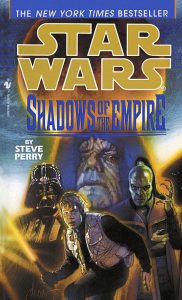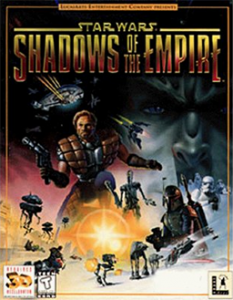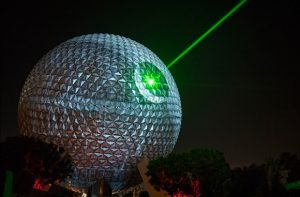Part 1 of a 3 part series. Click here for Part 1.
While Star Wars had begun to wane from mainstream abundance in the late 80s, the novels of the 90s were brand new logs on the fire. Book popularity helped Star Wars find friendly homes in new comic books and videogames. Libraries carried whole Star Wars sections. People genuine ly discussed the books too, maybe not Oprah style, but not internet-recluse style either. The books garnered readers of sci-fi, young and old audiences, and especially, satisfied the many Star Wars fans. So why did it take so long for Star Wars books to see light of day?
ly discussed the books too, maybe not Oprah style, but not internet-recluse style either. The books garnered readers of sci-fi, young and old audiences, and especially, satisfied the many Star Wars fans. So why did it take so long for Star Wars books to see light of day?
After 1983, what Lucas did and didn’t plan to explore in future Star Wars films was up in the air. By the ‘90s, after forays into other movies—like the wonderful Willow, and, sigh…Howard the Duck—Lucas was willing to let other people explore his characters. Writing about Star Wars came with restrictions for the various contributing authors. The time period before Episode IV was off limits, unless a story went back thousands of years. LucasArts had to grant approval for proposed plots, and George Lucas had some sort of veto power on all projects.
To sum the 90’s novels up briefly: Luke continues Jedi training; Han and Leia have a romance; the struggle continues against new and old threats in the galaxy. New characters were introduced, babies were born, and fringe movie characters had a chance to shine. Sometimes characters who appeared for the briefest second in a movie were featured in novels…seriously some characters later explored may as well have been smudges on a Mos Eisley wall. The novels branched in niche directions too, like with the X-Wing series, and The Young Jedi Adventures. Indeed, the Force was strong with these books, and George Lucas wanted to test the waters and learn just how strong.
 Prior to ‘96, LucasArts began planning a multi-platform merchandising event.
Prior to ‘96, LucasArts began planning a multi-platform merchandising event.  Shadows of the Empire explored a storyline in the period between Empire Strikes Back and Return of the Jedi. The book came with a comic book tie-in, toy line, and video game. The project was a financial success, and arguably, this test was one of the best or worst things to happen for the future of Star Wars. Success meant the slumbering giant woke. George Lucas once again wanted to produce new Star Wars material. He first did this by altering his old material.
Shadows of the Empire explored a storyline in the period between Empire Strikes Back and Return of the Jedi. The book came with a comic book tie-in, toy line, and video game. The project was a financial success, and arguably, this test was one of the best or worst things to happen for the future of Star Wars. Success meant the slumbering giant woke. George Lucas once again wanted to produce new Star Wars material. He first did this by altering his old material.
The release of the “Special Edition” in 1997 was fine, though the first clues that Lucas might have lost some of his magic touch became evident with some of the dreaded changes he made (and would continue to make) as fans and critics responded with anguish. As for the novels, 1997 was an apex year. There were twenty-one Star Wars novels published from various authors that year. The books were breeding like two hamsters a pet-store clerk assures are of the same sex and bound not to produce so many babies that you run out of friends to pawn the things off on. Authors who wrote about Star Wars didn’t seem to do so only to make royalties. These authors truly seemed to care about the characters. Yet twenty-one novels in one year meant sales tended to spread out rather than climb. And the world of Star Wars novels was soon to get overshadowed anyhow.
 When 1999 neared, so did frenzy for new Star Wars movies. With the prequels, George Lucas was going to open the gates to a mysterious time only hinted at in the original trilogy. But George Lucas’s return meant some big changes for the books. For one, whatever George Lucas introduced, even if asininely stupid, like force-inseminated virgin birth, midichlorians, Gungans, etc., these all became part of the overall universe. Continuity of stories would fall into line under Lucas, regardless of anything an author had written in a book about things like character backstory, and even about the philosophical aspects of the force. But the worst thing for the novels was that since George Lucas wanted to drive again, LucasArts wanted most of the novels to follow his lead. After ’99, many Star Wars novels focused on the time surrounding the prequels. But, those that didn’t were more restricted into storylines that LucasArts heavily oversaw—a debatably good or bad thing. This meant an end to some of niche novels series like the X-Wing and Young Jedi Knights. And it also meant authors had less freedom to decide on what kind of story to explore.
When 1999 neared, so did frenzy for new Star Wars movies. With the prequels, George Lucas was going to open the gates to a mysterious time only hinted at in the original trilogy. But George Lucas’s return meant some big changes for the books. For one, whatever George Lucas introduced, even if asininely stupid, like force-inseminated virgin birth, midichlorians, Gungans, etc., these all became part of the overall universe. Continuity of stories would fall into line under Lucas, regardless of anything an author had written in a book about things like character backstory, and even about the philosophical aspects of the force. But the worst thing for the novels was that since George Lucas wanted to drive again, LucasArts wanted most of the novels to follow his lead. After ’99, many Star Wars novels focused on the time surrounding the prequels. But, those that didn’t were more restricted into storylines that LucasArts heavily oversaw—a debatably good or bad thing. This meant an end to some of niche novels series like the X-Wing and Young Jedi Knights. And it also meant authors had less freedom to decide on what kind of story to explore.
Drastic as these changes were, many authors continued writing and Star Wars novels continued churning out throughout the 2000s. What all the various authors did to explore the overall Star Wars universe was quite extraordinary, and was done by creative and passionate people. And all of this had been established  was about to get a visit from the Death Star. Yes eventually, an empire would invade the world of Star Wars literature and change it all in a way no one ever expected.
was about to get a visit from the Death Star. Yes eventually, an empire would invade the world of Star Wars literature and change it all in a way no one ever expected.
Join me next week for the final look at Star Wars novels, and what the change in ownership meant for the legacy of all these books.
Click on the link to check out Part 3.
One Reply to “M.Y.O.P.I.A. # 16: Star Wars: Episode II – The Canon Shaken”
Comments are closed.